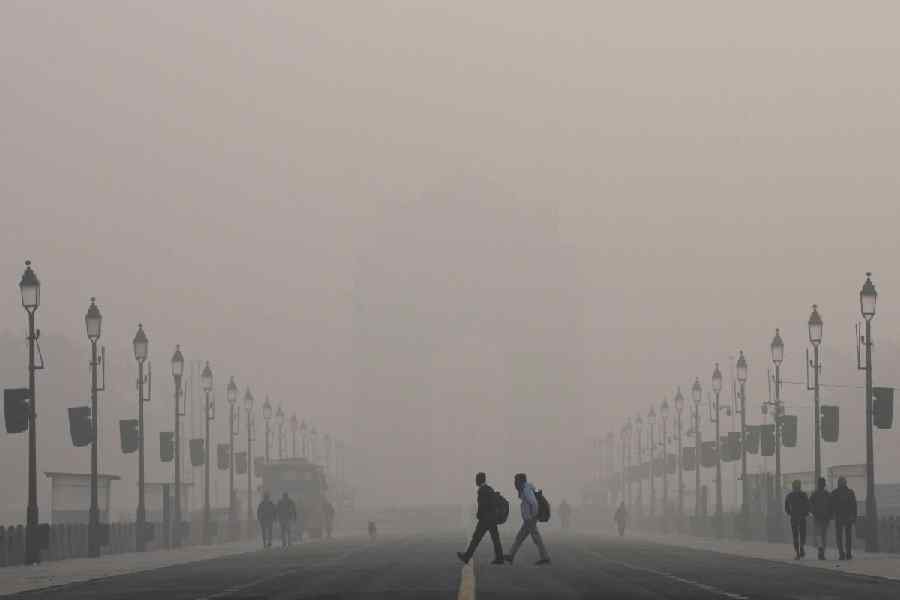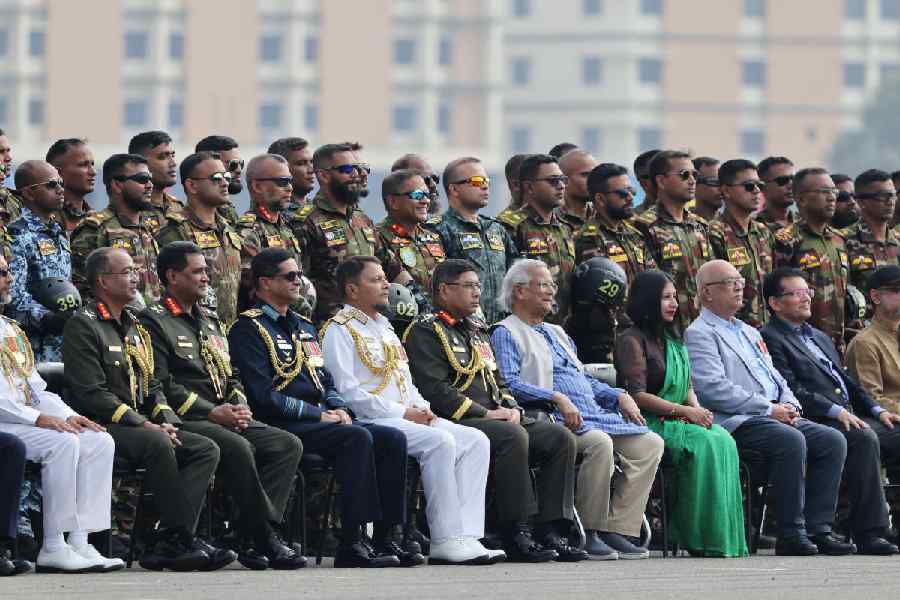 |
| PEACE HAVEN: The Punjab Club |
Leaving and still loving Lahore
It is easy to understand why Indians who were forced to leave Lahore — Khushwant Singh, for example — still have fond memories of the place. The balcony of the Punjab Club early in the morning when the malis are sweeping the fallen leaves from the grass lawn or watering the potted plants is an oasis of peace.
The giant screen which had been erected the previous evening for the India-Pakistan match has been removed. In fact, nothing remains to show that the garden, which had been filled with Punjab Club members and their families, had witnessed high emotion.
From my room I could hear screams though I could not always distinguish whether they were of delight or of pain. The morning after the night before, talking to Agha Khalid Mehmood, secretary of the Punjab Club since 2008 — and proud to be so — I could detect the collective national pain.
The club, that dates back to 1863, has only 300 full members and strict rules on who can do what. One of the early members was John Lockwood Kipling, founder principal of the Mayo College of Arts and the first curator of the Lahore Museum.
The Punjab Club has reciprocal arrangements with similar establishments in India, among them the Saturday Club in Calcutta, the Umed Club in Jodhpur and the Royal Western India Turf Club in Pune. In London, it is the Oxford & Cambridge Club and the Royal Commonwealth Society.
“It still feels very British,” I remark to the secretary.
“Very British,” he concurs, with feeling.
He runs the place with typical Indian-Pakistani gruffness that masks a great deal of concern and affection for the Club — and for Pakistan.
“We never had this terrorism before,” says Khalid. “A few people are spoiling the name of Pakistan.”
 |
 |
| Fashion speak: Seyhr Saigol and (bottom) a Zaheer Abbas creation |
First Lady
The Pakistan-India match is about to start as Seyhr Saigol drives through Lahore traffic.
“It’s madness,” she tells me. “Everyone is trying to rush home.”
All offices are shut as the government has declared a half day holiday.
The Pakistan Fashion Development Council, which is organising Pakistan Fashion Week, “is my baby,” admits Sehyr, who launched Libas magazine in London “24 years ago”.
As the undisputed First Lady of Lahore, Sehyr has made it her mission to safeguard Lahore’s position as the centre of Pakistani arts and culture.
One of the young stars of her fashion show is Zaheer Abbas, 28 — “my father named me after the cricketer”.
A model teeters out wearing a very short skirt.
Young Zaheer doesn’t want me to get the wrong idea.
“I don’t do cleavage,” he says firmly.
Name game
On landing in Islamabad, the capital of Pakistan, a point of similarity with India immediately becomes apparent. The airport has been renamed after Benazir Bhutto, just as Delhi International was renamed after Indira Gandhi.
The good news for me is that my suitcase comes through on the conveyor belt. The not-so-good is that it takes two hours for baggage to appear after landing. Since PIA is remarkably generous with its free baggage allowance — 40kg — passengers check in with three to four suitcases each.
Since I have missed the 30-seat connecting flight to Lahore, there is little hope of getting on the subsequent services which are overbooked. However, the four-hour drive to Lahore on a motorway, as good as anything in Europe, over the Jhelum and Chenab rivers brings back history lessons about Punjab as “the land of the five rivers”.
In village after village, serene and peaceful, people can be spotted playing cricket. Perhaps the visa regime could be relaxed to allow festive matches between Pakistani and Indian villages, with chai and samosas served during frequent breaks.
Pakistan puzzle
Generally speaking, I try to avoid packing a fat book on an outgoing flight in the hope I can buy a fat book or two for the returning flight. But I am glad I have made an exception for Pakistan: A Hard Country (Allen Lane; £30) by journalist-turned-academic Anatol Lieven, which I am reading as uncorrected proof copy.
It is a thoughtful, sobering book, very different in style and content from Patrick French’s portrait of India which is laced with anecdotes. Lieven’s approach is much more academic. He is, after all, professor of international relations and terrorism studies in the War Studies department at King’s College, London.
It is a cliché to say Pakistan’s internal politics is complicated — which country’s is not? — but Lieven’s treatise is especially valuable for Indians to read. Summing up the book, I said to an acquaintance in Lahore: “It’s not really Pakistan vs India any more.”
“No,” she agreed, “it’s Pakistan vs Pakistan.”
Lieven originally wanted to call his book How Pakistan Works.
“There have been times during the writing of this book when it seemed it would have to be titled, Requiem for a Country,” he admits.
Yet, it is hard to disagree with Lieven’s broad conclusion that despite the forces attempting to pull it apart, Pakistan as a country will hold.
It is a cliché to say Pakistan is like India only. It is also a cliché to say Pakistan is not like India. Pakistan may be a “weak state” but it contains “strong societies”, Lieven argues.
“Not quite as bad as it looks,” the author observes, after apparently suggesting the opposite.
His chapter on the army, an institution that is here to stay, is excellent.
This is an important book for Pakistanis, an even more important one for Indians. Indians should be very careful with public pronouncements about Pakistan.
A Pakistani diplomat I know recommends a pragmatic course of action: “Let’s put aside issues like Kashmir and let’s get on with expanding trade.”
My Lahore acquaintance makes the same point in a different way: “Pakistan should ride piggy back on the growth of the Indian economy.”
The crucial point probably is that it is in India’s interest to make this happen.
 |
Tittle tattle
There is great excitement. Hilary Alexander, The Daily Telegraph’s fashion director, is in Lahore to cover fashion week.
Hilary, a long time colleague who lives not far from me in south London, tells me she covers something like “500 fashion shows” a year. She does a tweet while we are in a car in Lahore and almost immediately gets a response.
She tells me she has 1,65,000 followers — I am not surprised. She is one of the big names in the fashion business.
One of the main organisers behind Pakistan Fashion Week, Nusrat (“Nuscie”) Jamil, takes Hilary shopping one day in Lahore’s Anarkali Market. Hilary asks me to tag along.
It is a hilarious experience as Hilary spots bras on open display “in an Islamic country”. She spots fabric with polka dots which have inspired Western designers.
Hilary finds it very thrilling — I think I will take her round New Market in Calcutta one of these days.
Nuscie helps Hilary collect fabric, white kurtas, nagra shoes and an “Asif Ali Zardari” Muslim cap.
The two women try on a wig.
“This is so Cheryl Cole,” enthuses Hilary.
Nuscie, who has distinguished greying hair, admits her Pakistani friends are in despair “because I won’t dye my hair — they say I have an Indian woman NGO look”.











